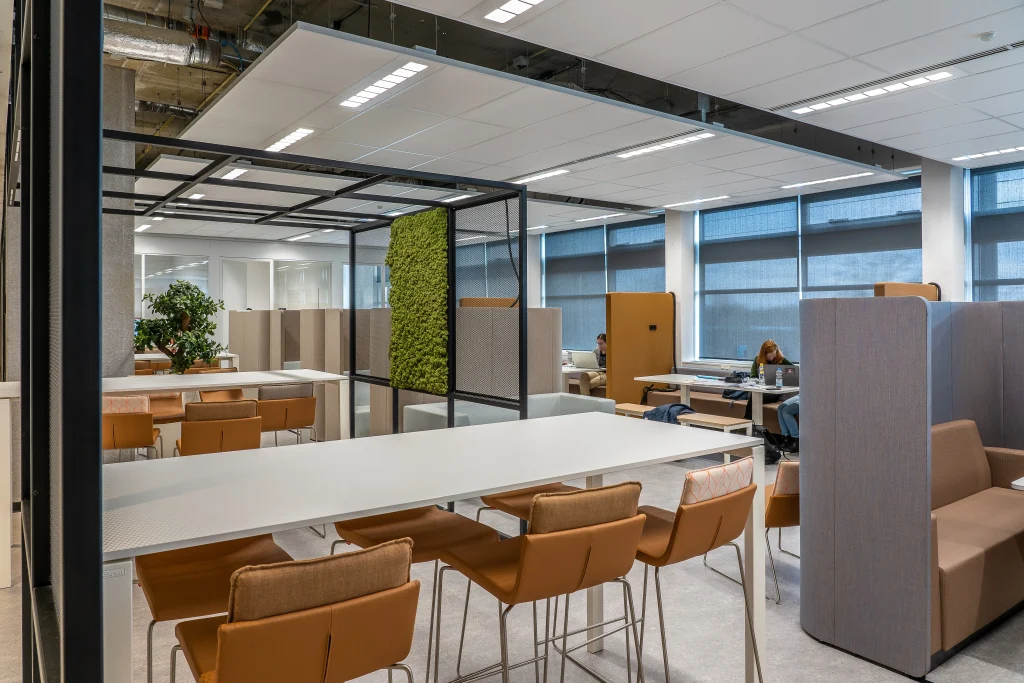The workplace has evolved at pace following the pandemic, and charities of all sizes are considering how much office space they require in a hybrid-enabled world.
Charities like many businesses are facing economic hardship with pressures on fundraising and cost inflation. Property holdings are firmly in the spotlight as executives and trustees seek to reduce operational costs and optimise property holdings.
Therefore, the core trend we are seeing is one of downsizing. Charities of all sizes are looking at options to reduce office accommodation costs as hybrid working becomes the new normal.
How much space are charities looking to shed?
The amount of space being reduced varies based on the individual requirements of the charity, on average we are seeing a 50% reduction when leases expire or buildings are sold.
London is a key target for space reduction as occupation costs are high vs the rest of the UK, some major charities shed more than 75% of their London office holdings.
Finding the right balance of WFH vs in office working
The holy grail of any business leader for 2023 and beyond is striking a balance of reducing operational costs whilst maintaining productivity in the longer term. Whether you’re a diehard office fan or a homeworker forever, finding the right balance which supports your culture, development and retention of staff and clients is no mean feat.
There is no right or wrong way of finding this balance, but it is recommended to seek external support via a workspace consultant and commercial office experts to help you understand what is likely to work best for individual needs of your charity.
What rightsizing strategies are charities looking at?
Below are some of the main strategies being deployed as charities seek to reduce space: –
- Taking less space at lease break or expiry
- Subletting space
- Selling freehold building into smaller freehold or leased / flexible space
- Sharing space with another charity
- Exiting leased or freehold into flexible office space
- Refurbishing and optimising existing space
- Going fully virtual
Top considerations when looking to rightsize your office space
When reviewing your property strategy, your organisational strategy must mirror it. Setting out the vision for the charity, the organisational goals need to be clearly defined so the property goals fit the direction of the business.
It is advisable to start by setting up an internal property steering committee with representation from HR, IT and property and finance as well as a senior exec sponsor. This group will likely meet at regular intervals from project inception to completion.
1. Understanding your requirements
Every charity will have its own individual needs and each team in the organisation will have varying requirements to be in the office vs working from home. Enlisting the help of a workplace consultant is a useful starting point to get under the skin of how much space you require now against what you might need, in say, 3-5 years’ time.
If you have a lease event on the horizon, you will need to engage a commercial agent to help identify alternative accommodation in the market and benchmark the cost of your current premises against new potential options.
2. Weighing up your preferred option
Once you have pinned down an office reduction strategy, you will need to further analyse your options around this strategy. Your commercial agent will work with you to either exit your current premises into smaller premises or assist in subletting your existing premises assuming you are in leasehold space.
Once you have assembled your stay-versus-go options, you can benchmark the costs involved in each option against intangible factors such as staff retention, business interruption and cultural change.
3. Leveraging technology
The rise of property related technology (Proptech) has meant that decisions can now be underpinned by an abundance of data. It is now possible to analyse everything from air quality to meeting room utilisation, this information can help shape all aspects of your new hybrid office environment.
4. Office design
Whether you stay in your existing space and sublet or downsize to a new office location, you will likely incorporate more dynamic features with technology that supports hybrid working. Current design trends incorporate more areas to concentrate, collaborate, connect and recharge. Getting the design of your new office right will be crucial in delivering your services, seeking expert advice is a price worth paying to ensure you’re incorporating features which will add value to your space.
5. Enlist a team of experts
Depending on the scale of your charity enlisting the right team of property experts will help safeguard the success of downsizing your space.
Constructive Space has considerable experience in working with charities of all sizes to help them make the best use of their office space with clients including Shelter, World Vision and Nacro to mention a few. They are offering free initial consultations to help charities achieve their workspace goals.





